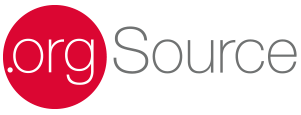Find the Athletes You Need to Innovate

Don Dea and Hugh Lee, the co-founders of DigitalNow, are colleagues I look to as voices from the future. In an interview for our book, “Association 4.0: An Entrepreneurial Approach to Risk, Courage, and Transformation,” Don made this prediction.
“In order to help workers adapt, associations will need to find and hire terrific athletes. Talent who can quickly build new models and leverage data to create products and services that didn’t previously exist.”
Hugh added this thought, “Don and I both know that the most important ability is a bit elusive. . .Success is all about connecting the dots. The world is full of opportunity, but you need to be ready to seize it.”
As we finalize the plans for .orgCommunity’s June 9 Innovation Summit, Don and Hugh’s ideas resonate. I’ve been asking myself these questions. What does innovation mean for associations? What are the benefits of an innovative approach? And how do you find and develop those talented athletes that Don was talking about.
Search for Curiosity

It might be exciting to see what a team of prodigies could deliver, but you don’t need to recruit geniuses. This is an important distinction. Associations can benefit more from innovation as a deliberate approach than as a continuous stream of flashy ideas. At the core, innovation is problem-solving. As Hugh noted, it is the ability to make a creative leap and see connections that are invisible to others along with the passion and tenacity to deliver on that vision.
In fast-moving, digital markets mental agility is golden. No resource is more valuable than people who make challenge the lens for growth and are eager to create a new reality. That skill can seem elusive, but the qualities those special thinkers share are more common than you might think.
Above all, people who connect the dots, are curious. They are addicted to questions, and they aren’t satisfied with superficial answers. They are always ready to explore beyond the obvious.
The curiosity gene produces natural-born learners. These students of the world have eclectic interests that launch them on far-ranging journeys. Their explorations are a framework for problem-solving. They form a prism of understanding that includes hobbies, books, travel, and creative endeavors of all kinds, from baking bread to making music.
A reading list is a clue to tell you whether you’re in the company of someone who has that compulsive need to know. Ask people what books they love and how often they read. Are they humanists who study both business and life? Or geeks who immerse themselves in the minutia of a single topic? Learn how they spend their spare time. Do they thrive on a variety of recreational skills? Seemingly soft questions can provide insight and context into intellectual perspectives, strengths, and preferences.
Understand the Mindset
When I interviewed Don and Hugh for the book, I spoke with 20 other entrepreneurs working in the association community. I discovered that although not all innovators become entrepreneurs, all entrepreneurs are innovators. Talking with independent business owners teaches you what it means to be someone who loves to find the gaps and build solutions to fill them. Entrepreneurs and innovators share these common characteristics. They are:
- Comfortable with ambiguity—Uncertainty is fuel to imagine new and better ways of doing business.
- Able to manage risk—The benefits of invention outweigh the fear of failure.
- Excited by the opportunity to take initiative and discover something unique—The chance to create is its own reward.
- Interested in a broad spectrum of topics and issues—Information is adrenalin that jumpstarts ideas.
- Big picture thinkers who can execute the details—The vision inspires, the minutia satisfies.
- Happy working in a team that brings ideas to market—Innovators understand the power of collaboration.
There are dozens of general and industry-specific interview questions designed to reveal these qualities. An example of one approach follows:

- If I gave you the budget and space to create a new initiative at our organization, what would you do?
- What steps would you take to vet your idea and develop an implementation plan?
- Who would you pick to be on your team?
- If mid-way through the project the budget got cut in half? How would you proceed?
- If the initiative wasn’t successful, how would you respond?
- What do you think would be most challenging? What would be most rewarding?
Before I ask these questions, there is something else I want to know. The answer has a significant impact on every employee’s success. I need to see that, at the least, there is genuine interest in our mission and, ideally, real passion to support the work we do. Without that enthusiasm, people are unlikely to make meaningful contributions.
Value the Talent You Have
Problem-solvers who are already on your team are a significant untapped resource. As consultants, we frequently interview staff. During these conversations, it’s not unusual to find employees with the ability to connect the dots but, who for one reason or another, are not using that skill. Innovation must be intentional. To retain new talent and maximize current potential create an idea-friendly culture.
It goes without saying, that intimidation is Roundup for creativity. Ideas won’t grow where there is fear of judgment or a negative response. Welcome every contribution. If suggestions miss the mark, use constructive criticism, not judgment, to point your team in the right direction. Make space on agendas and in one-on-one meetings for participants to be spontaneous and creative.
To invite fresh thinking at ACGI Software, Kevin Hostutler organized a Shark Tank. Hostutler, who is founder and CEO, described the program like this. “Recently, to get everyone thinking creatively, we added a Shark Tank component to our company meetings. It gives any employee with an idea a platform to present their innovation. The concepts can range from technology tools, to work environment and process improvement, but the request must be specific. The goal is to get one or more executives to sponsor the initiative. We work with submitters on their pitches to help them consolidate their thoughts, articulate their proposition, and have the courage to defend their idea in front of the entire company.
“One of the first projects we supported was to build an Alexa integration into the database. The group asked for $50 for equipment and three people for two days to do a hackathon. Plus, they wanted pizza delivered for dinner. We requested specificity and got it! It was fabulous to see them pitch their idea and field the feedback from peers and executives. A successful two-day hackathon and four pizzas later, that feature is an important part of our product line and our strategy for an improved user experience.”
I admire this idea because it supports innovation on multiple levels. Teamwork, mentoring, originality, and execution are all part of the process. In addition to training those athletes who Don says we need for future success, it’s a strategy to engage the people, who are more comfortable bean counting than brainstorming, in the creative spirit. Ideally, this is what you want. Every person on your team should be an innovator.
I’d love to hear about your favorite innovators. Tell me who you think connects the dots and why. Stories about unsung heroes are highly encouraged.
